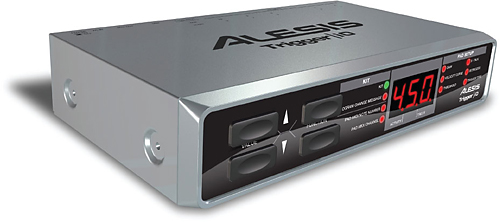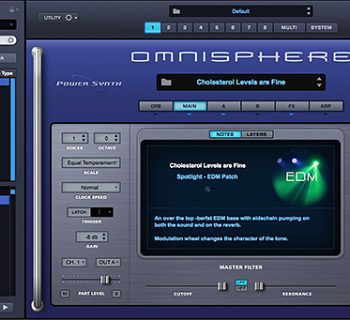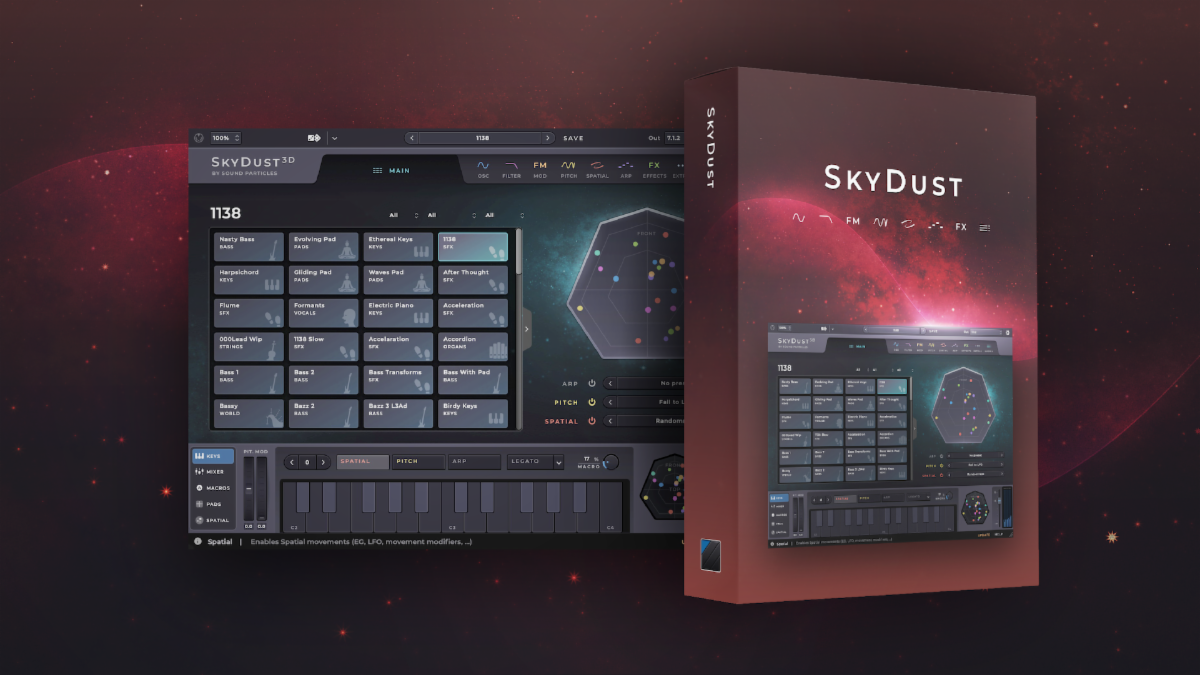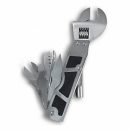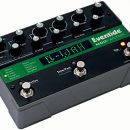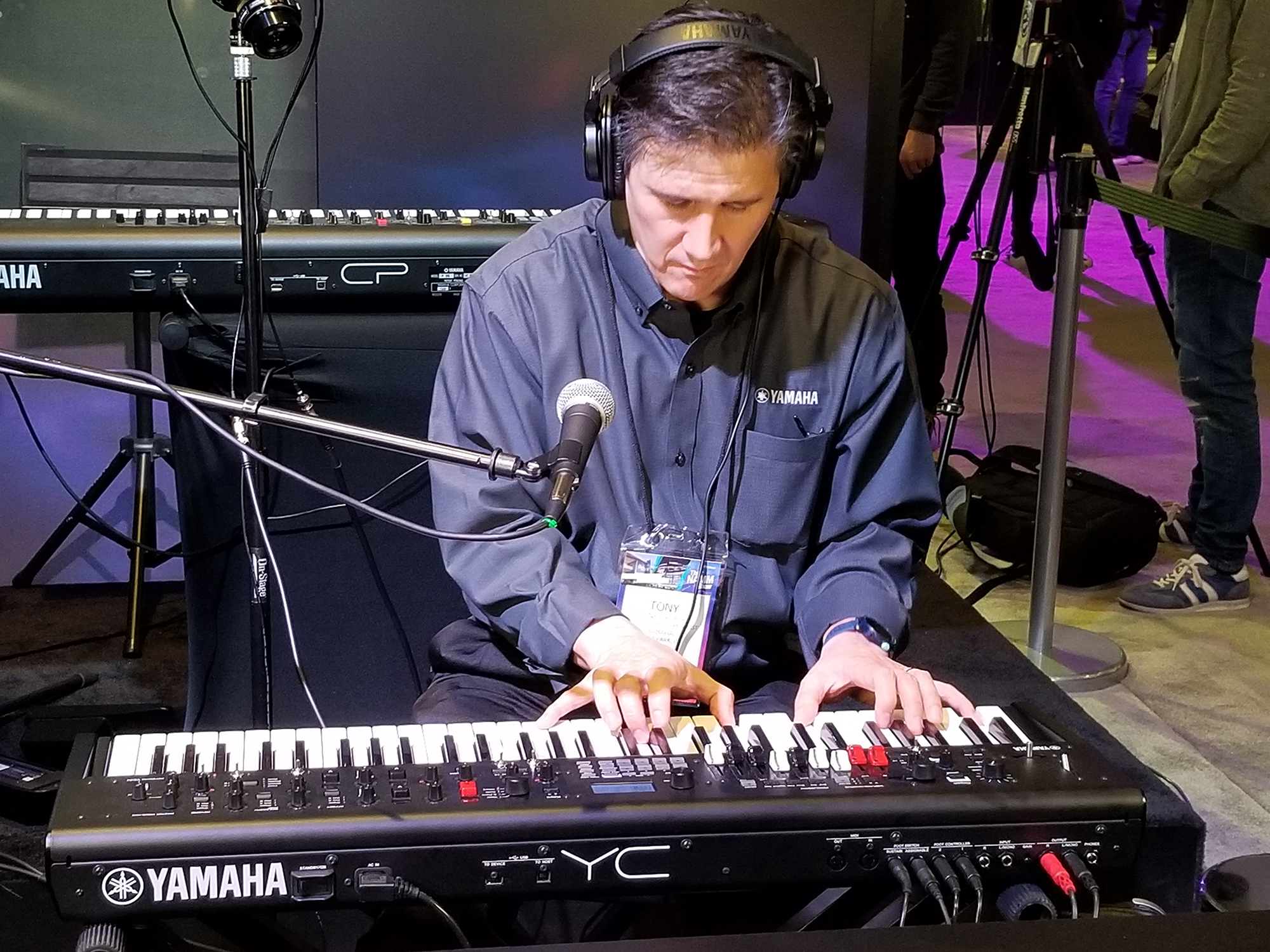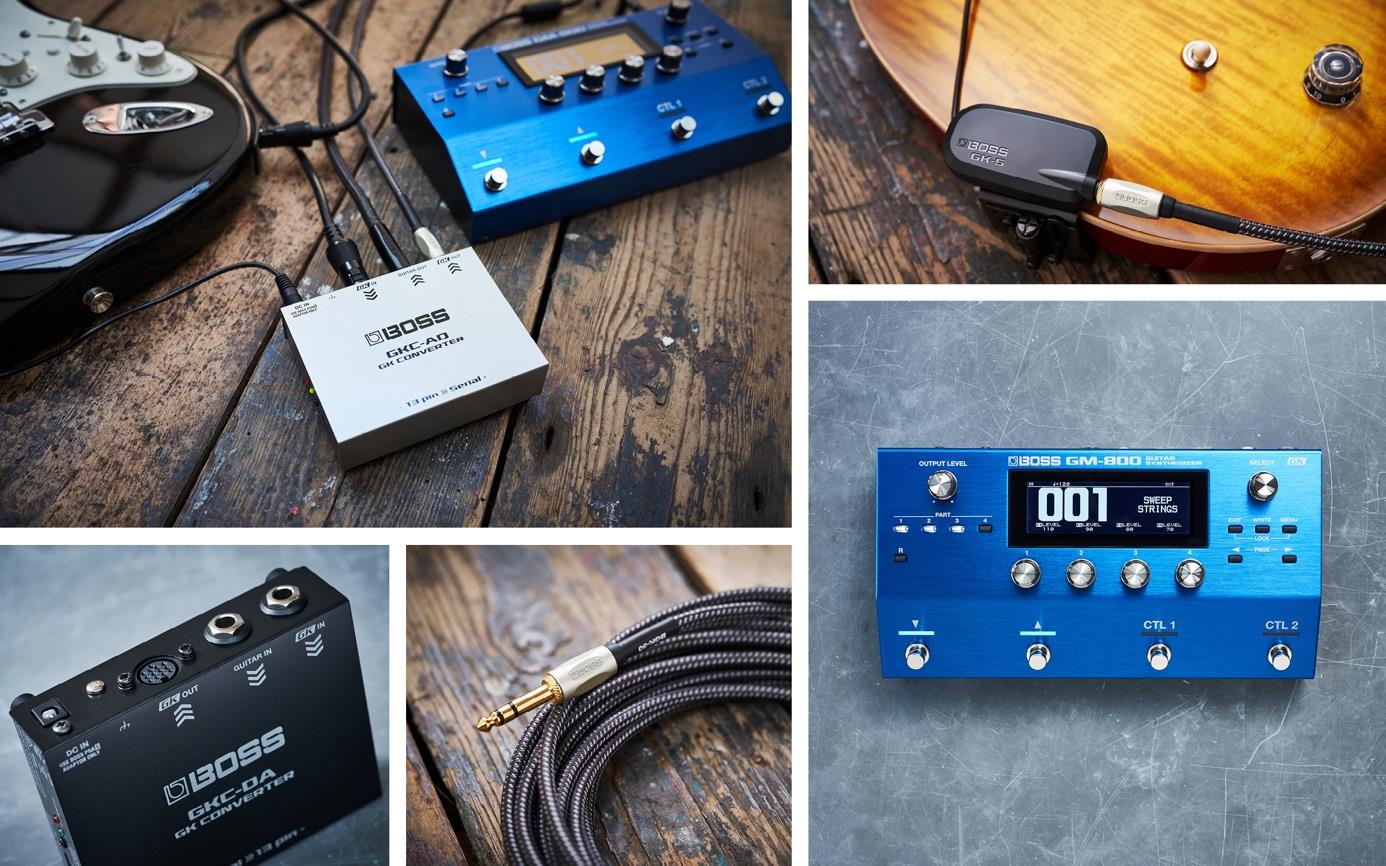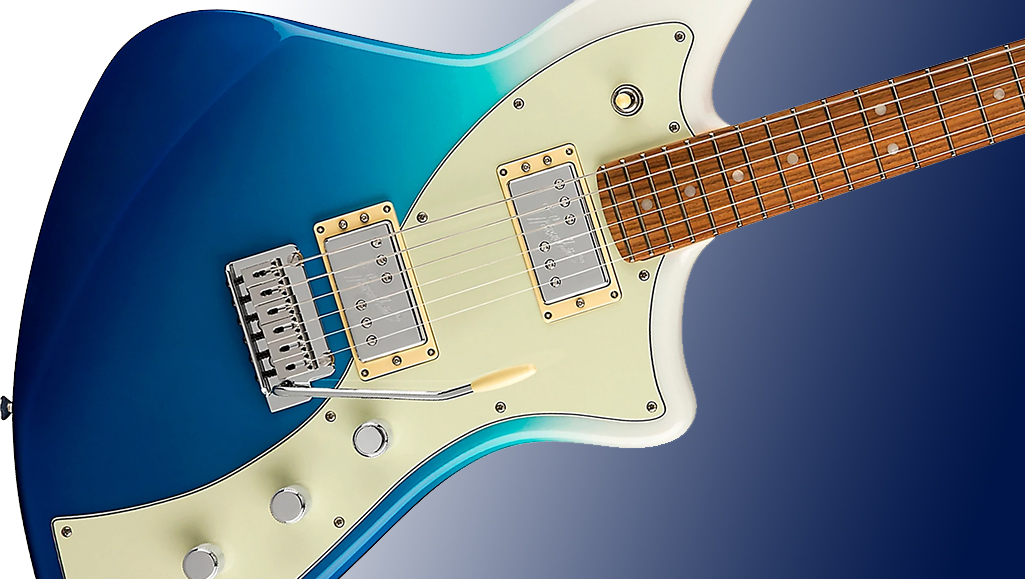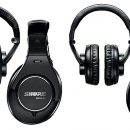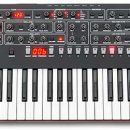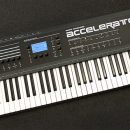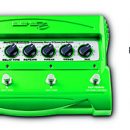
The job of a trigger input-output device is pretty simple… convert an analog trigger signal into digital MIDI note information for triggering sounds in hardware and software sound devices. Common drum modules can perform this task but there are few options in the market today for musicians wanting only the trigger interface to drive other sound sources. Why waste money on a sound module if you don’t need one? We found the Trigger|iO to be a particularly outstanding tool for use in the studio environment since we’d be less likely to use the sounds built into a drum kit brain/module and more likely to trigger samples from our sound library.The Trigger|iO is a compact unit that is chock full of features for triggering external drum sound modules from your favorite drum pads, and as an added bonus comes bundled with FXPansion’s popular BFD Lite software drum module. With the trend towards computer-based sound modules (plug-ins, VST instruments, etc.) and recording, the Trigger|iO is positioned perfectly to provide musicians with a flexible tool that can be used in the studio, on the road, or wherever triggering is required.
While compact and USB-powered — great for live use, some live performers will still prefer the flexibility provided by larger drum modules that incorporate connection points for more drum pads, multiple dedicated audio outputs, and real-time mix controls, but those solutions cost significantly more. For the typical acoustic drummer looking to add a few electronic pads to an acoustic kit, though, the Trigger|iO may be just the right tool. And if you already need to keep a laptop on stage for running backing tracks in a sequencer, light shows, etc., then the Trigger|iO makes an even more-compelling choice.
Features
![]()
The Alesis Trigger|iO has all the basic features one would expect from a trigger input/output device along with some modern conveniences under the hood that make this an incredibly flexible piece of equipment.The Trigger|iO is equipped with ten TRS input jacks that can accommodate either single-zone or dual-zone triggers. The Trigger|iO’s TRS (Tip Ring Sleeve) jacks accept both TRS cables for dual-zone triggers and TS (Tip Sleeve) trigger cables for single-zone triggers. Since most electronic drum pads manufactured these days incorporate dual-zone triggers, the TRS inputs on the Trigger|iO make it a versatile tool that can be used with many makes and models of triggers.
Alesis states that the Trigger|iO is compatible with various manufacturers’ pad triggers including Alesis, Roland, and Yamaha. A Trigger|iO Compatibility Guide is available on their website that provides specific pad compatibility and setting information for many different pad manufacturers. The only major manufacturer omitted was ddrum. Alesis told us that they have yet to test the ddrum triggers with their hardware and will update the compatibility guide when they do.
In addition to pad inputs, the Trigger|iO also has a hi-hat pedal input for use with hi-hat controller pedals. This input can send two different MIDI notes – think open and closed hi-hat sounds – depending on the position of the pedal. A third MIDI note number can also be assigned to the Pedal Down position of the pedal for a pedal-hat sound.
The Trigger|iO allows the storage of up to twenty programmable presets, or Kits. These Kits are collections of parameters that describe different custom configurations of the Trigger|iO. Each Kit includes parameters for MIDI note numbers assigned to triggers, MIDI channels, and program change information. Having this information stored within the parameters of a Kit, opposed to globally, allows for different software and hardware module configurations. For example, one Kit could be configured to control a software module whereas another could be configured to control a digital audio workstation or external sampler.
The following customizable trigger settings are available for editing directly from the front panel of the Trigger|iO: Gain, Velocity Curve, Threshold, Crosstalk (X-Talk), Retrigger and Trigger Type. These settings are fairly standard among trigger modules. However, Alesis shows its dedication to creating a universally compatible device by allowing users to choose from a variety of trigger types ranging from common piezo triggers to switches to hi-hat pedals or any combination in between.
As far as mounting and placement of the device is concerned, the Trigger|iO is compatible with most drum mounts and can be mounted on a drum or cymbal stand.
One nice feature that is not mentioned in any of Alesis’ marketing materials for the Trigger|iO is the ability to upgrade the firmware of the device. This modern feature makes it possible for Alesis to improve the Trigger|iO as necessary through software updates. These updates are downloadable SysEx (System Exclusive) MIDI files that any MIDI software utility can transfer to the Trigger|iO. Easy to follow step-by-step upgrade instructions are documented in the Trigger|iO Reference Manual.
The USB interface can power the Trigger|iO so you don’t need a separate power source — very nice when setting up for live gigs. A standard power adapter is also included to power the unit when not connected to a computer.
Surprisingly, the computer interface is only USB 1.1 compliant. We would expect a current product to support the faster USB 2.0 specification, but perhaps the simplistic nature of MIDI data from a drum trigger just doesn’t necessitate a faster connection link.
Usability
![]()
Since we already had a set of electronic drums set up (Roland V-Drums), connecting each of the pads to their corresponding trigger inputs on the real panel was a piece of cake. Each pad input was clearly labeled with both number designations (1-10) and names (kick, snare, tom, etc).
A USB cable was provided with the Trigger|iO for use with a computer. Although sufficient if you’ve got a music laptop computer next to your kit, we found the supplied cable too short for practical use and optioned for a longer cable to connect the Trigger|iO to our Mac located on the other side of the studio.
The Trigger|iO ships with FXPansion BFD Lite drum software. Its installation procedure was straightforward, and in just a few minutes the application was up and running on our Apple MacBook Pro running Mac OS 10.4. The application automatically recognized the Trigger|iO interface, and the triggers mapped correctly to each drum sound.
Tip: It’s a good idea to make sure the Trigger|iO is plugged in and turned On prior to launching BFD Lite otherwise the application might not recognize the Trigger|iO as being connected.
Without adjusting any of the Trigger|iO settings we decided to jump right in and start playing. Although most of the trigger parameters were fine using their default settings, some triggers such as the snare and toms required some adjustment. All the editing activity took place from the front panel of the Trigger|iO. In our case, the snare trigger was a bit sensitive which was easily rectified by lowering the Gain.
Another common problem with drum triggers is crosstalk. Crosstalk happens when vibrations from engaging one trigger are transferred to another, causing it to trigger as well. This problem happens frequently when triggers are mounted on the same drum rack or stand. There are a number of methods for dealing with crosstalk but the most common solution is to adjust the Gain and/or Threshold for each trigger. The Trigger|iO also has a dedicated X-Talk feature that will intelligently suppress unwanted trigger signals. A positive X-Talk value will give precedence to the louder trigger values while suppressing softer trigger values assuming they’re crosstalk.
The Trigger|iO has a great built-in feature for editing parameters called “chase mode.” Just hit the trigger you wish to edit and the parameters will appear on the screen. This made easy work out of assigning sounds to triggers and editing trigger parameters.
 We had mixed feelings about the three-character LED screen. It would have been nice to have a larger, backlit LCD display for programming the Trigger|iO. The three-character display is a limiting factor for how characters and words are displayed, which results in cryptic nine-segment LED character translations that are not easily interpreted. This was especially noticeable when programming the Velocity Curve or selecting the Trigger Types. That being said, this is really only an issue when setting up the triggers and programming the kits during the initial setup. On a positive note, we appreciated the bright red LED characters when switching between the programmed kits. The LED is easily readable in low-light situations such as studios or live performances and does not require you to squint to read the characters (as with most LCDs).
We had mixed feelings about the three-character LED screen. It would have been nice to have a larger, backlit LCD display for programming the Trigger|iO. The three-character display is a limiting factor for how characters and words are displayed, which results in cryptic nine-segment LED character translations that are not easily interpreted. This was especially noticeable when programming the Velocity Curve or selecting the Trigger Types. That being said, this is really only an issue when setting up the triggers and programming the kits during the initial setup. On a positive note, we appreciated the bright red LED characters when switching between the programmed kits. The LED is easily readable in low-light situations such as studios or live performances and does not require you to squint to read the characters (as with most LCDs).
One issue we experienced with the Trigger|iO and our Mac was latency. When we struck the drum pad there was a slight delay in the response of the sound from the Mac. There is a section in the manual that addresses latency issues and provides suggestions for how to resolve the problem. To be clear, the latency issue has nothing to do with the Trigger|iO. This is a common problem with computer sound cards and in most cases is resolved when the buffer in your audio software is set to a lower number. We contacted Alesis about this issue and they also recommended using an external audio interface such as their Alesis IO 14 or any other USB or Firewire device with dedicated software drivers (as opposed to relying on the default audio technology built into the operating system). Fortunately, we had a third party audio interface at our disposal which resolved the latency issue.
The MIDI Out port on the back of the Trigger|iO can also be used to directly control external MIDI devices. We connected an external, rack-mounted synthesizer to the MIDI port on the Trigger|iO and in a matter of minutes were triggering that sound module’s drum kits.
Sound
Although the Trigger|iO does not technically produce any sound (and thus there is no Sound rating in this review) we feel obligated to say a few words about the software that comes bundled with the device.
FXPansion’s BFD Lite is a slimmed-down version of its bigger brother, the popular acoustic drum module, BFD. For those of you wondering what BFD stands for, you can use your imagination – but it includes the words “Big” and “Drums.” It’s not surprising that Alesis chose BFD Lite as their software bundle for the Trigger|iO since BFD is one of the premiere software drum modules in the industry, and it sounds great. BFD Lite has many of the same features as the more expensive BFD System and includes the Lucite Kit from the original BFD, the Tama Star Classic Kit from BFD XLF, and the 808 Kit from the BFD 8 Bit Kit expansion pack. You have complete control of the drum kits in BFD Lite from your own virtual drum studio.
These are not your average drums samples, either! They were recorded using eleven different microphones positioned around the kit and room so you have many options when mixing your drum sound. The software ships on a CD with installers for both Mac OS X and Windows. It’s also important to note that BFD Lite runs as both a stand-alone application as well as in the VST, AU, or DXii plug-in formats.
Documentation and Product Support
![]()
Alesis ships two manuals with the Trigger|iO: a Reference Manual and a Quickstart Manual. In the case of the Trigger|iO, we had some preconceptions for how this device would integrate into a musician’s setup. We initially consulted the Quickstart Manual which gave us a high-level overview and confirmed what we already knew about how the Trigger|iO should be used.
Only after spending some time with the Trigger|iO did we refer to the Reference Manual for information, and when we did we found it to be useful and highly informative. The manuals also provide an excellent overview of drum triggering “basics” covering important subjects such as crosstalk, thresholds, and retriggering.
Price
![]()
The Alesis Trigger|iO ($299 MSRP) can be found online for around $150, an incredible bargain for a drum trigger and computer interface. If you don’t need sounds built into a trigger interface, you could pick up a Trigger|iO and some nice mesh pads to trigger your other sound sources (or the very capable included BFD Lite).
Contact Information
Alesis
www.alesis.com

